Loosening up and allowing new ideas to germinate by thinking through drawing: about Lindenmayer systems, recursion, cellular division, branches and shapes. This process was a form of making energy visible, akin to Knowles’ Tree Drawings (https://www.cabinetmagazine.org/issues/28/knowles.php) except my hands were the branches and the wind was my mind:
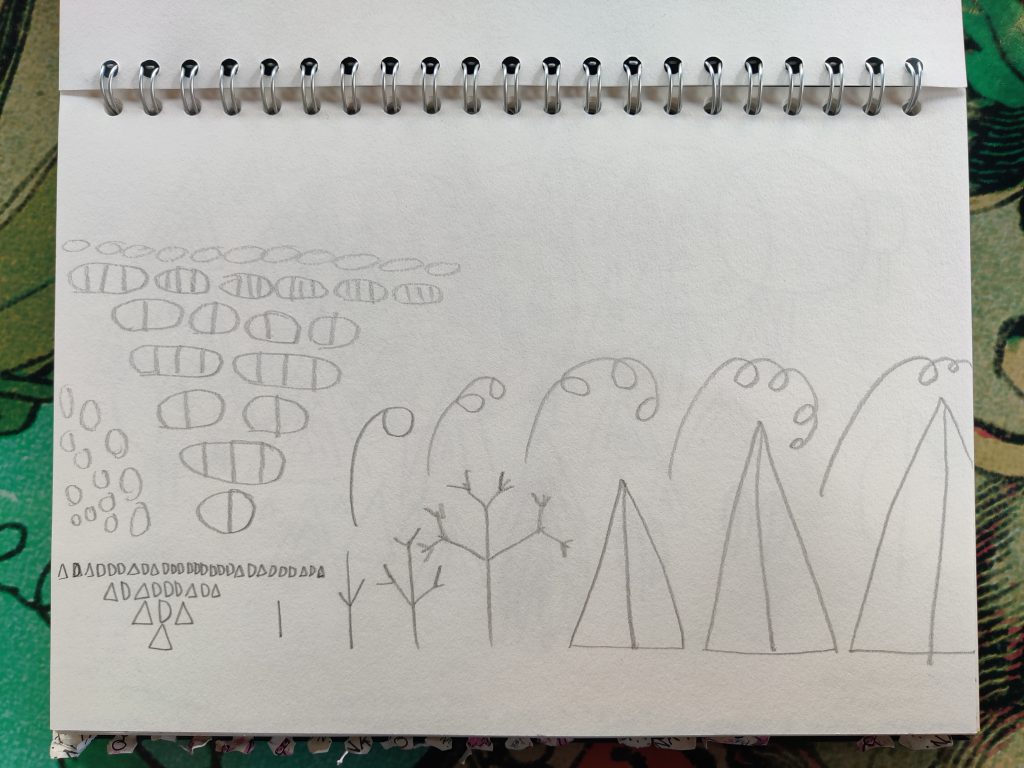
Focusing on the word, ‘REPEAT’ – thinking about the fractal filling of forest space (à la Enquist piece from The Language of Trees, ‘Tree Theory, Biogeography and Branching’ as well as the ideas of pattern repetition from Auerbach’s Ligature Drawings) – there’s randomness yet adherence to rules (‘freewill’ and determinism):
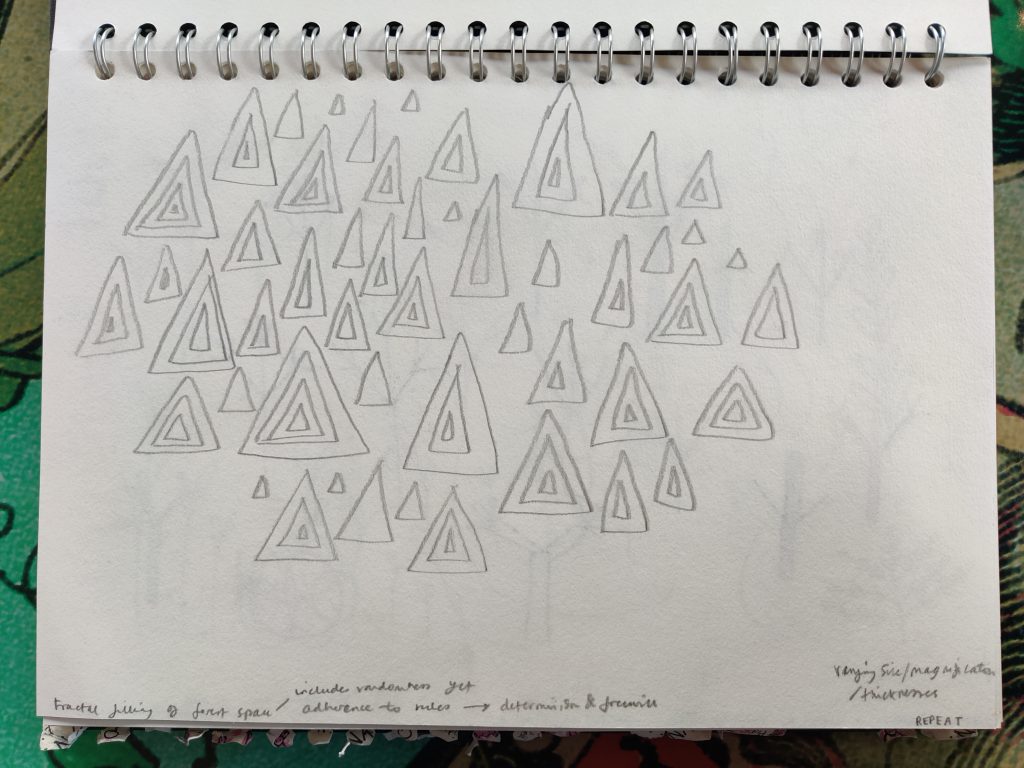
Focusing on the word, ‘FOCUS’: zooming into the intricacies of the leaves, of the trees; shapes occur and reoccur in this system and the actual world; there’s something cyclic in the linear story:
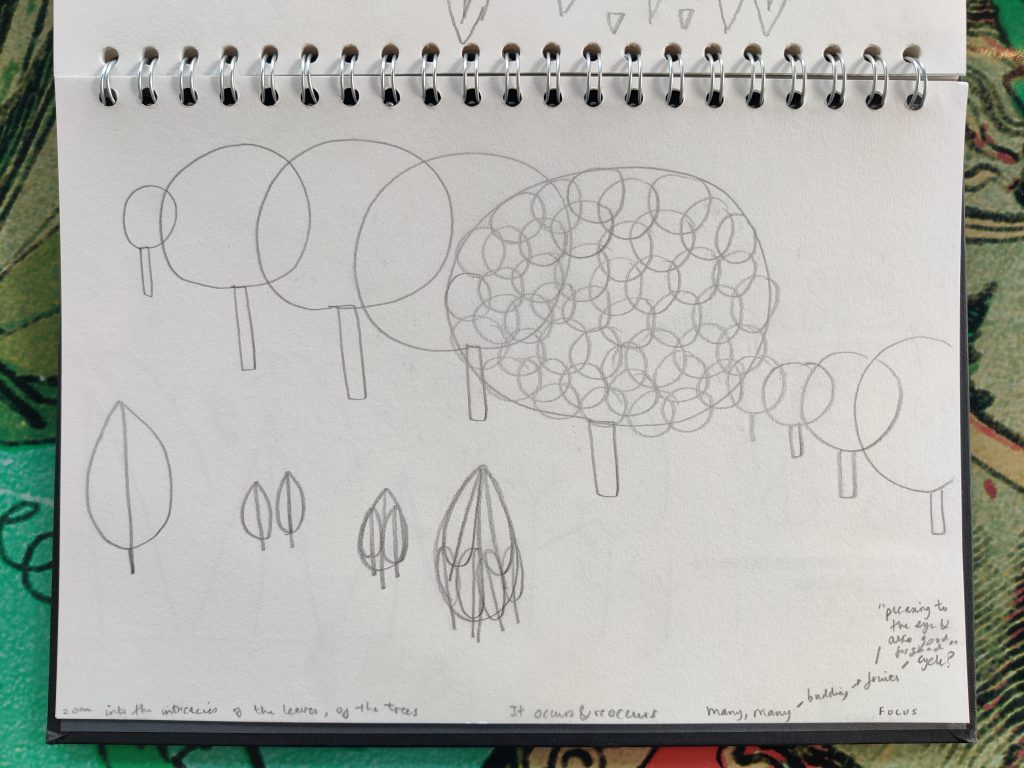
Focusing on the word, ‘ORGANIC’, with curvature and fluidity, not geometric rigidity:
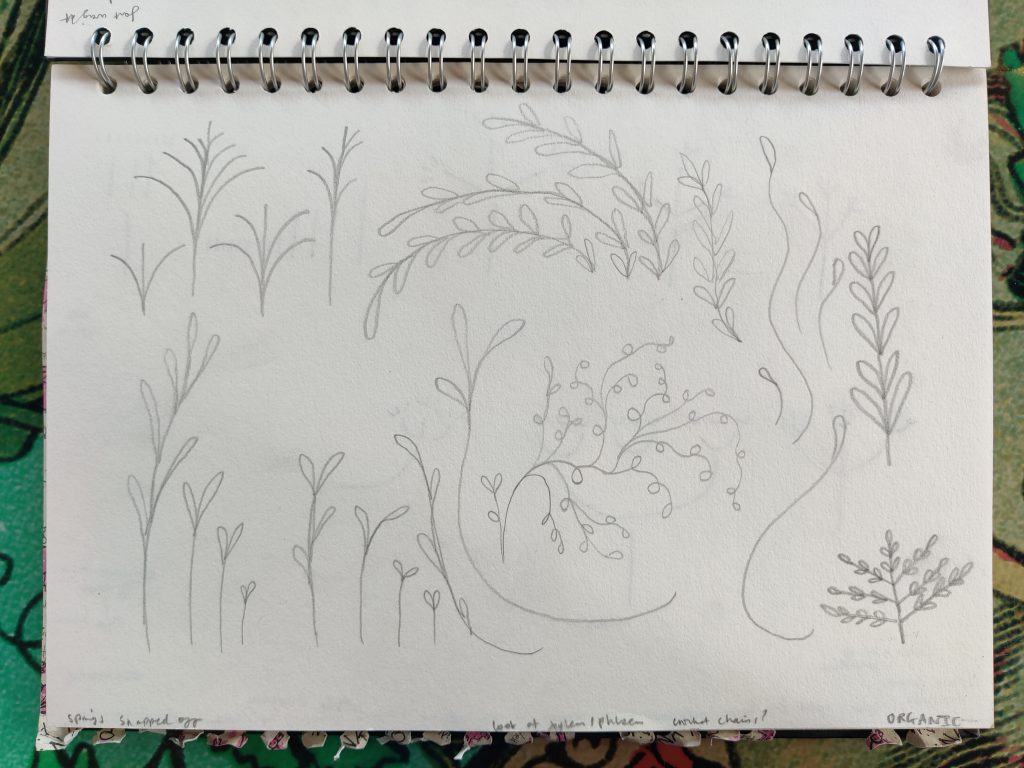
Focusing on the word, ‘CONTRAST’, using the word as a wedge to open up ideas relating my coded outputs with typography, thinking about the XY: Latin-Arabic logo matchmaking workshop with Azza Alameddine, with changing font weight and characteristics, and the fact that the cross-sectional area of the branches at each level matches that of the trunk (Enquist, 2023):

Focusing on the word, ‘DECONSTRUCTING’, pulling apart the lines, in a kind of ‘tree surgery’, chopping up the visuals and re-arranging their constituent parts, thinking about the meaning loss/gain. Maybe they could be reused in a new creation, like how herbs are grown and we pick them to eat rather than to look at, despite their beauty:
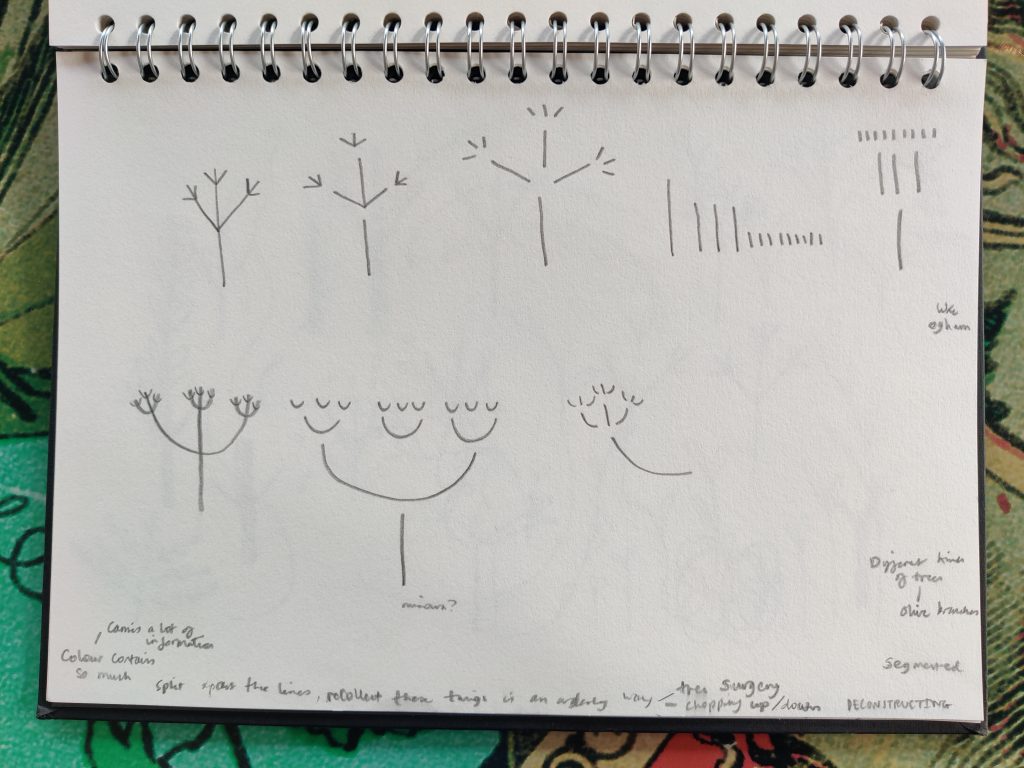
The split-apart lines start to resemble Ogham, (also known as the ‘Celtic Tree Alphabet), in which all of the letters represent different species of tree and were engraved into stones as sign-posts (a kind of ancient expression of location-based publishing, relating to the Publishing^3 workshop)(https://www.treesforcities.org/stories/the-mysterious-ogham):
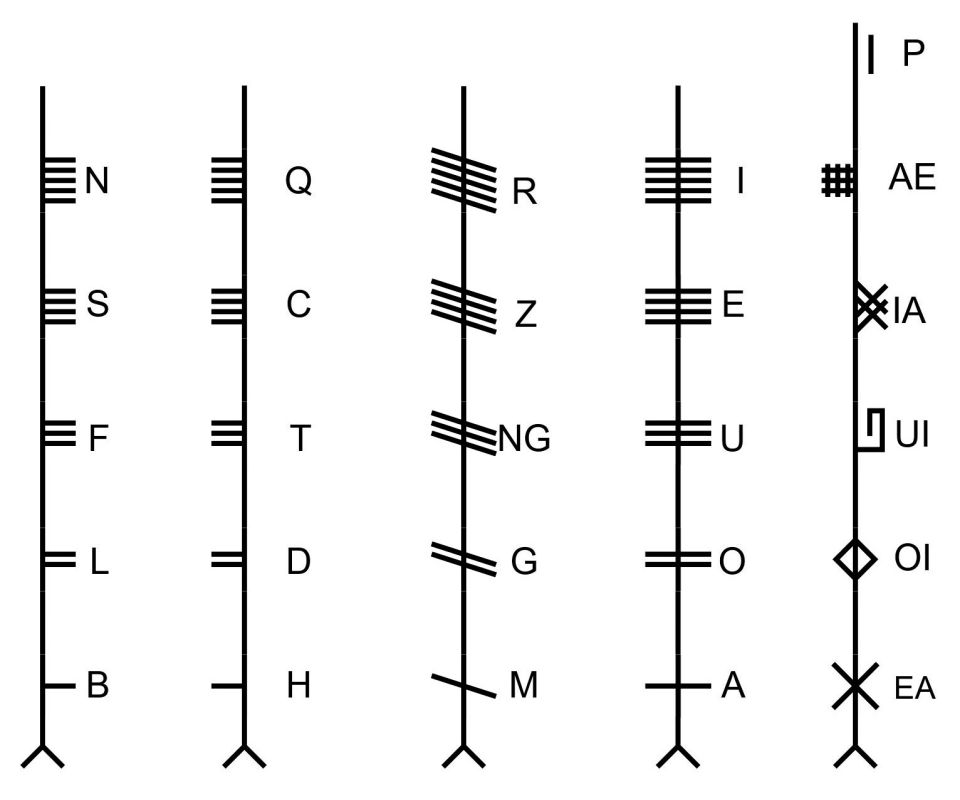
This idea is mirrored in Katie Holten’s Tree Alphabet, in which each letter is the shape of a tree beginning with its corresponding letter in English e.g. A is an Apple Tree (https://www.katieholten.com/treealphabetdrawings#/tree-alphabet/):
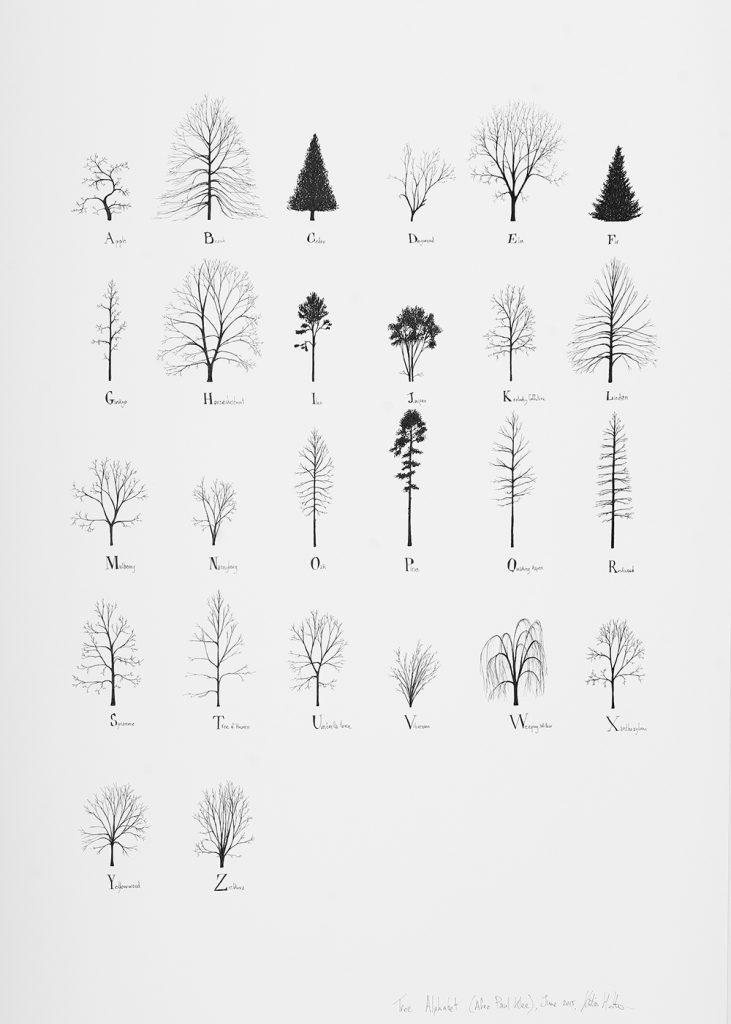
Thinking about how Lindenmayer systems are underwritten by alphabets and notation, but they could also be used as a kind of cypher to transmit or create new meaning. This could be akin to On Kawara’s Codes, such as Voices from the moon, which was deciphered to be a transcription of the first lunar landing conversation. Considering a Lindenmayer tree-cipher.
As Lindenmayer systems are rooted in formal language theory, there are sometimes other unexpected links between these systems and graphic communication design, for instance these staggering diagonals of words:
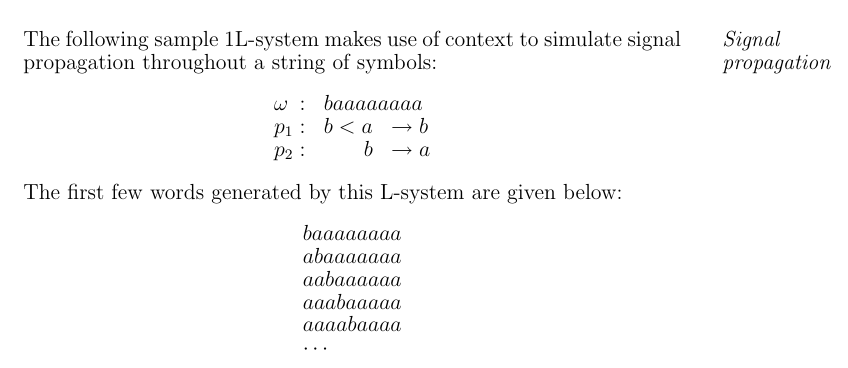
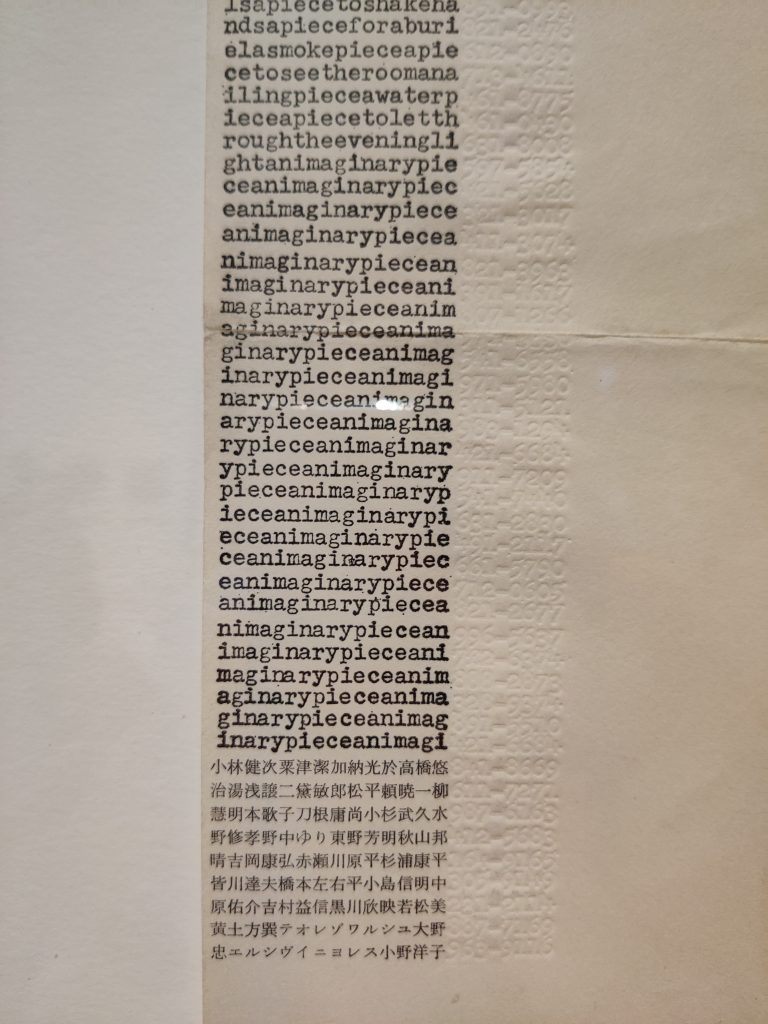
Also considering Yoko Ono’s Part Painting or Painting Until it Becomes Marble “To Richard” (from the ‘Yoko Ono: Music of the Mind’ exhibition @ Tate Modern):

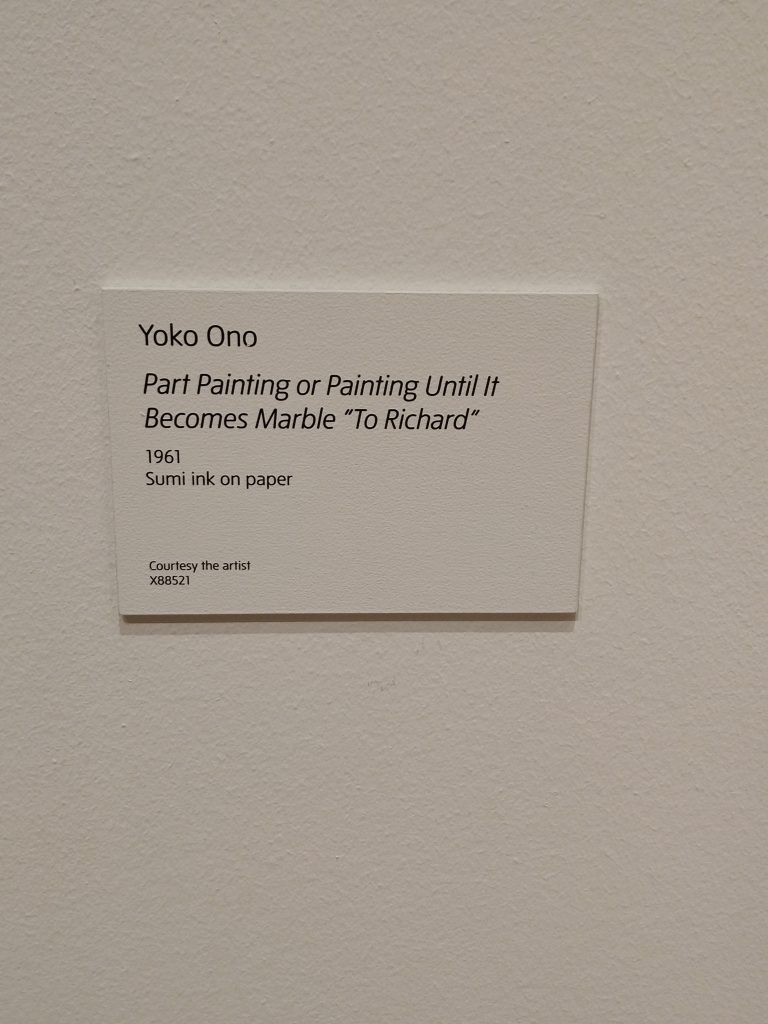
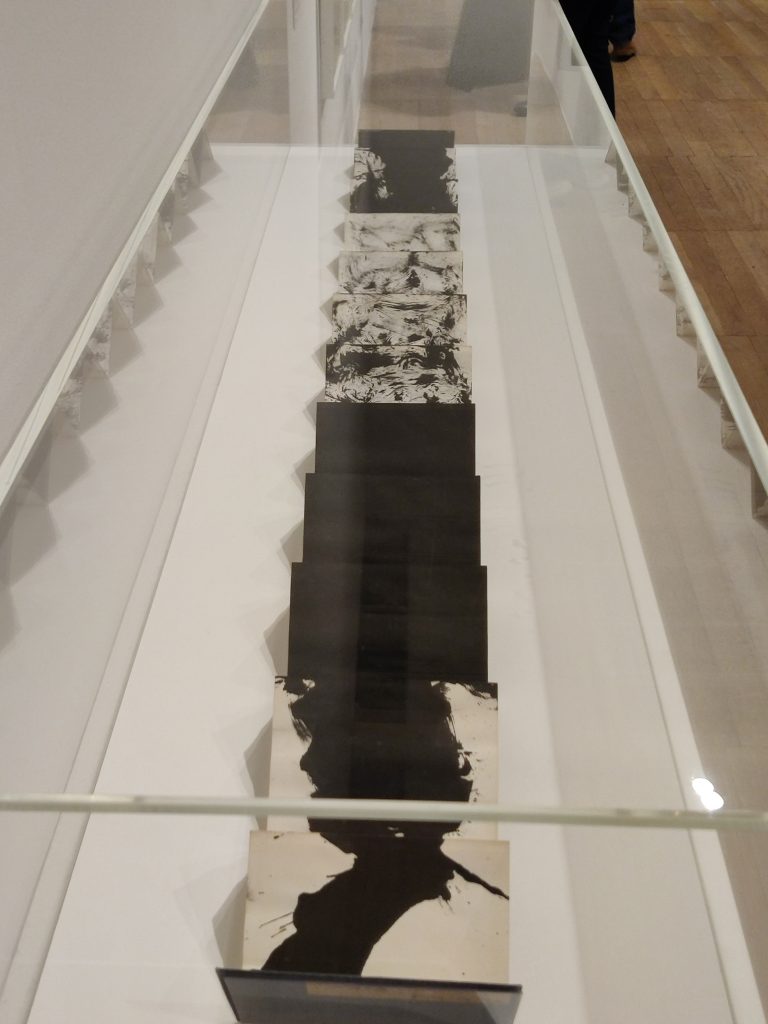
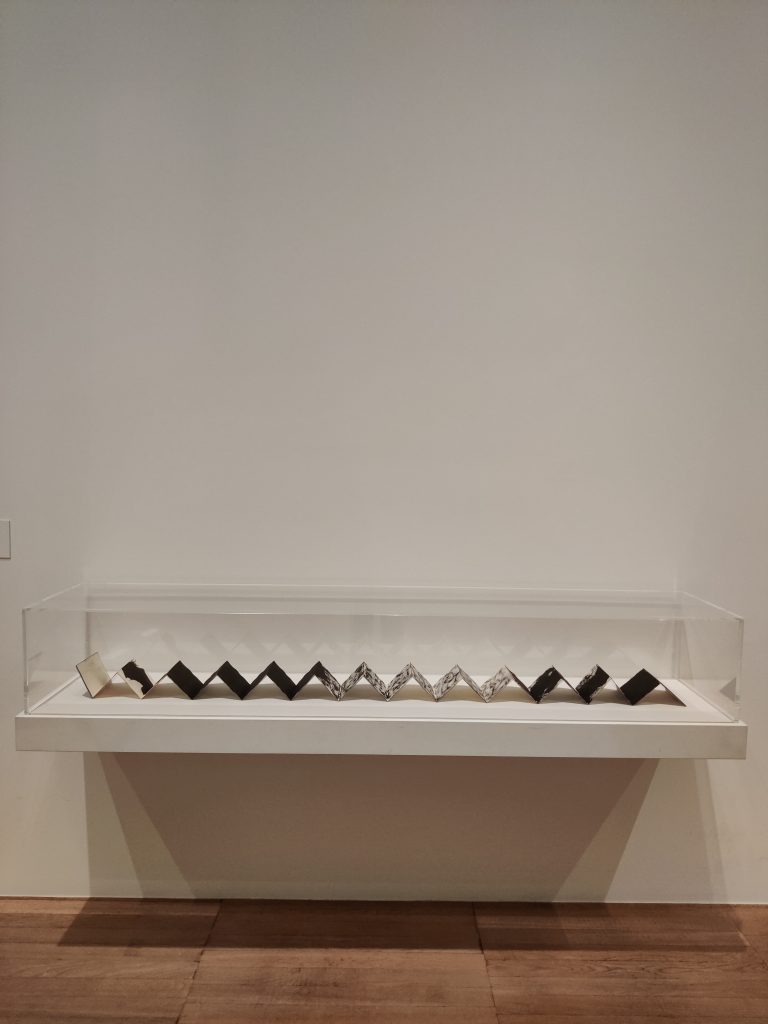
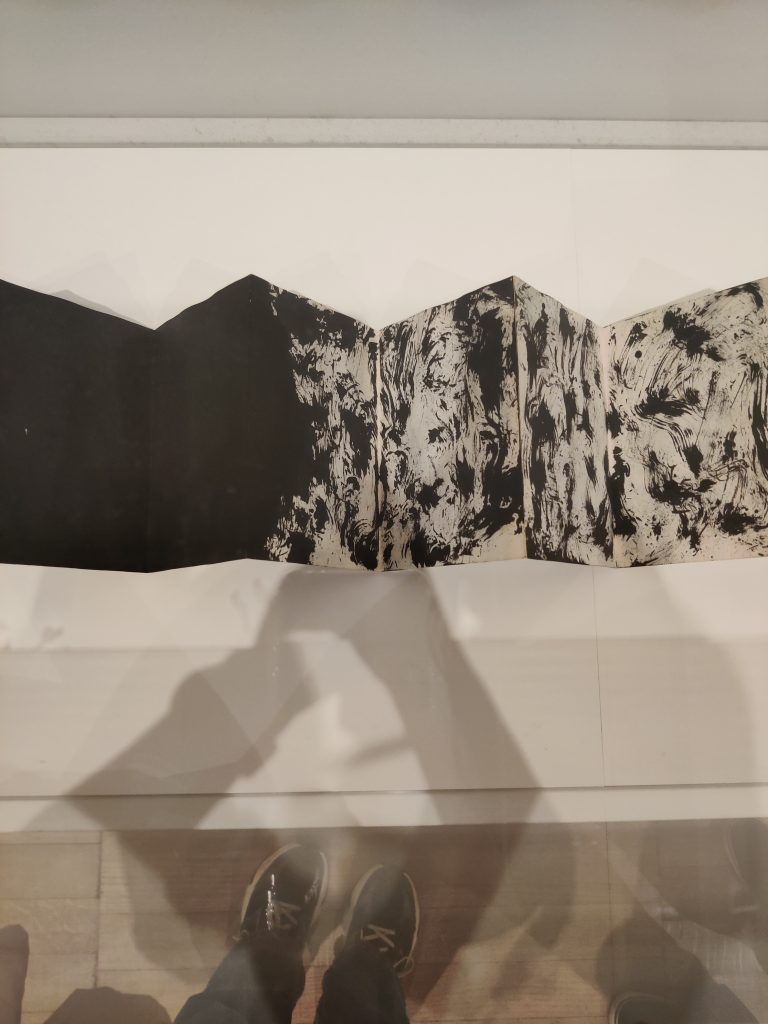
A concertina publication has angles. My graphical L-system phenotypes have been created by changing the angles of the successive rules, and a concertina fold also comprises angles which change according to how the reader opens it. It can also be used to display a continuous story with differing discrete phases.
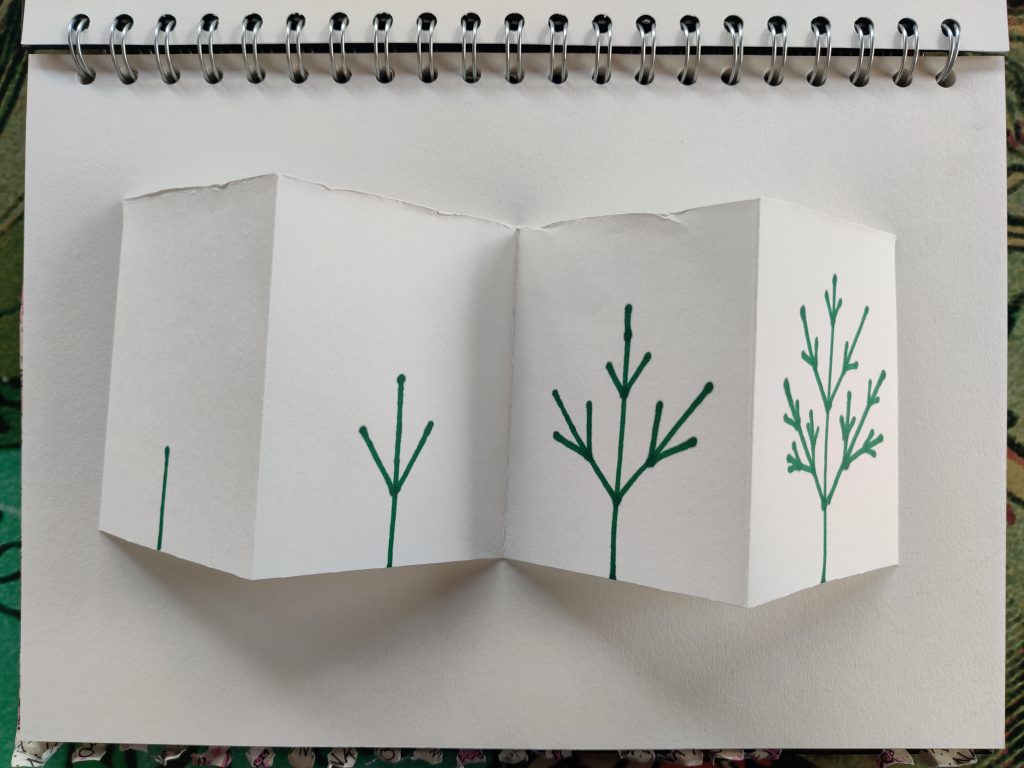
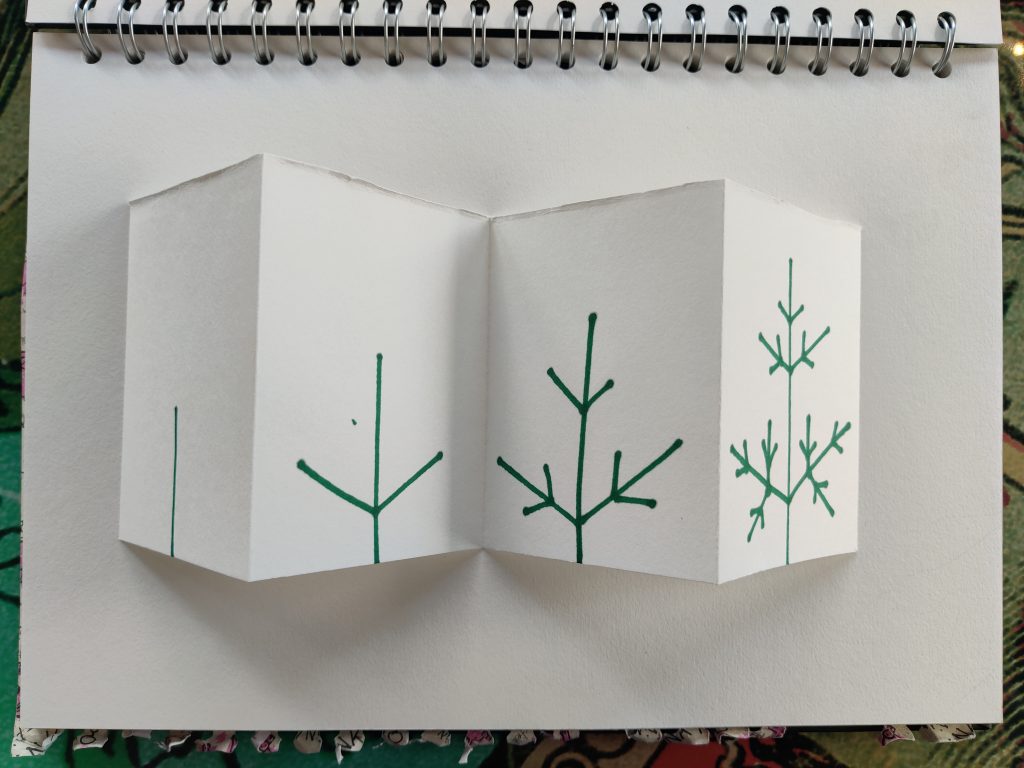

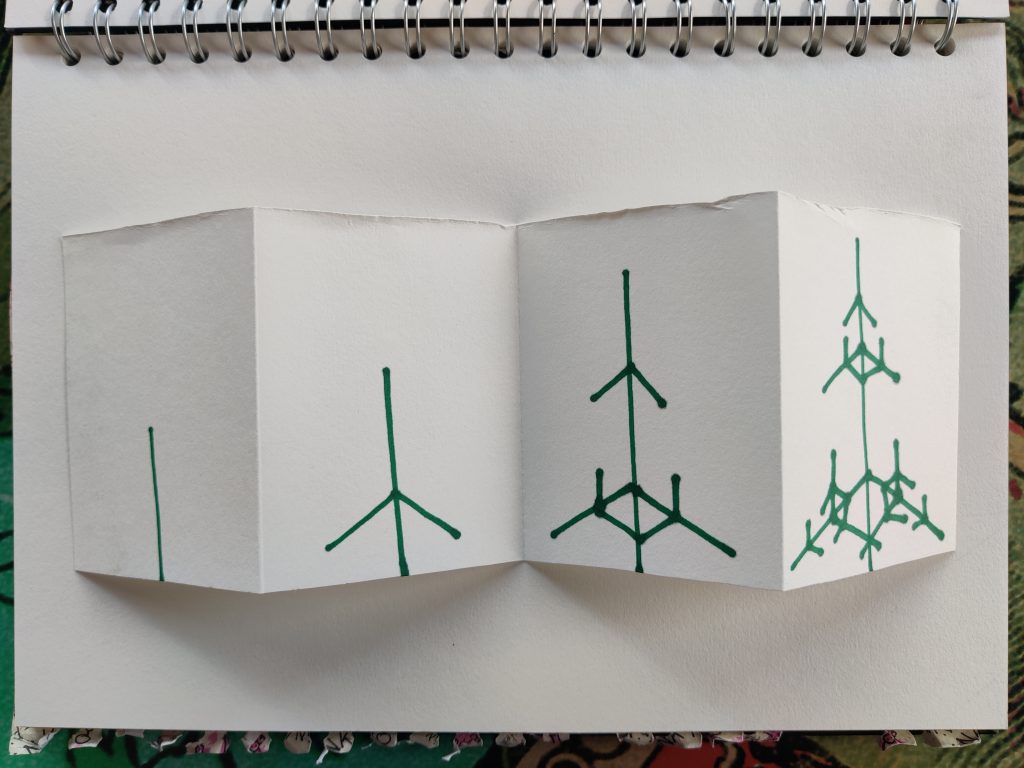

Thinking along the lines of “concept and mode of presentation” altering the outcome/perception/meaning, I began to move on from ink on paper (though I like the slight imperfection and inconsistency afforded by the hand-drawn quality) and copied my L-system onto needlecraft fabric, which gives the drawings new context but the iterations also are reminiscent of the digital. The squares in the fabric are akin to pixels and the iterations are discrete, yet the thread is continuous. The iterations are invisibly linked and so “[n]either wholly digital nor wholly analog[ue]” (Tenen, 2017).
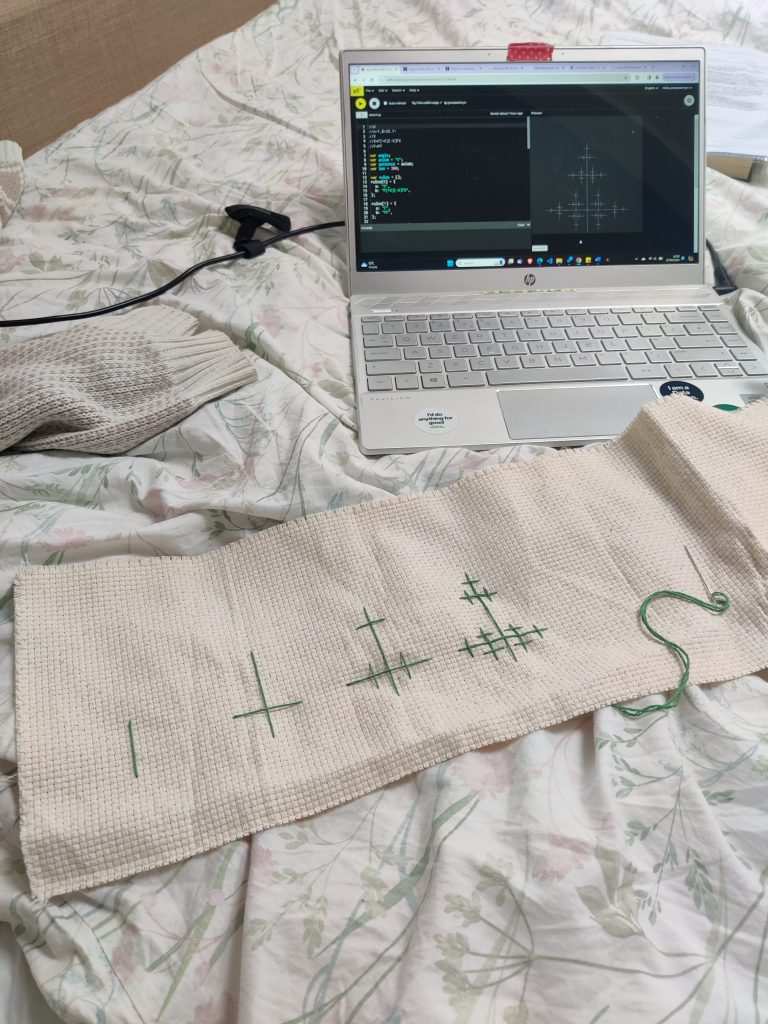
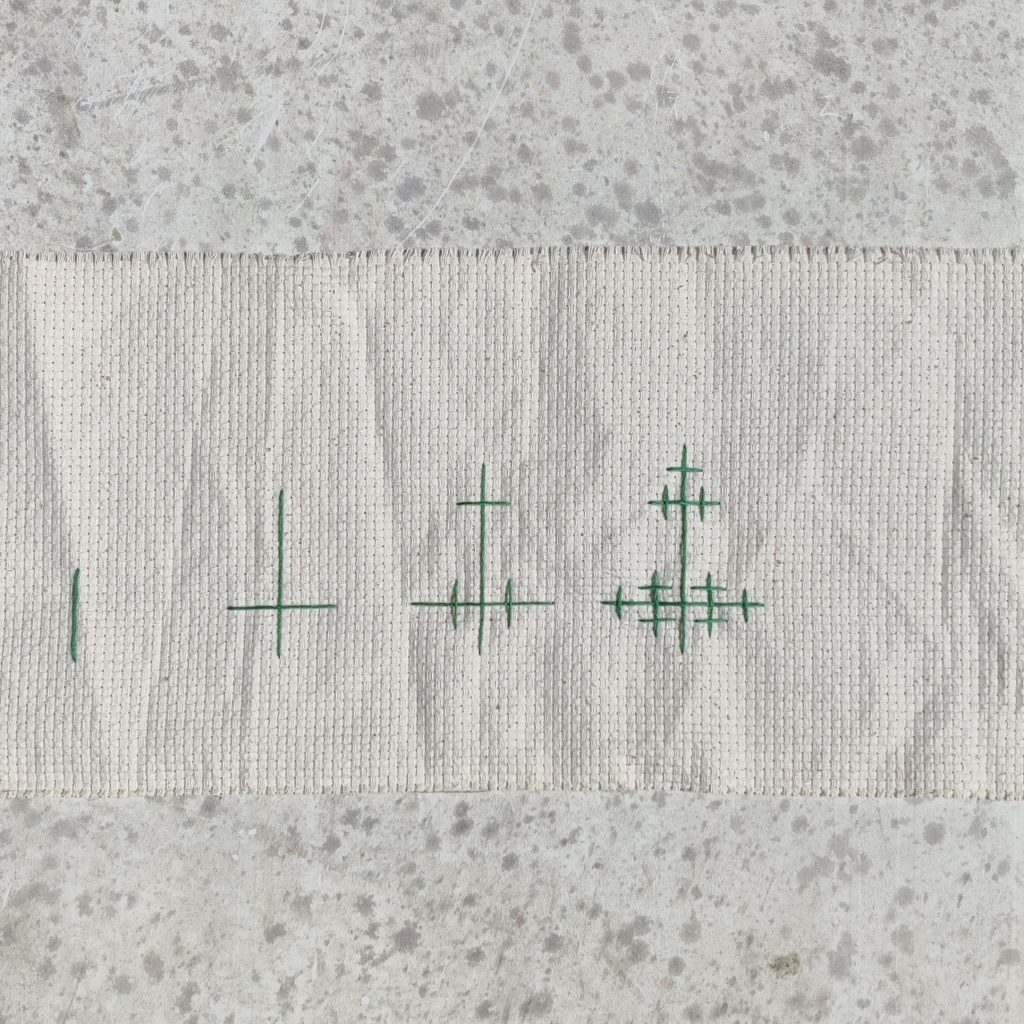
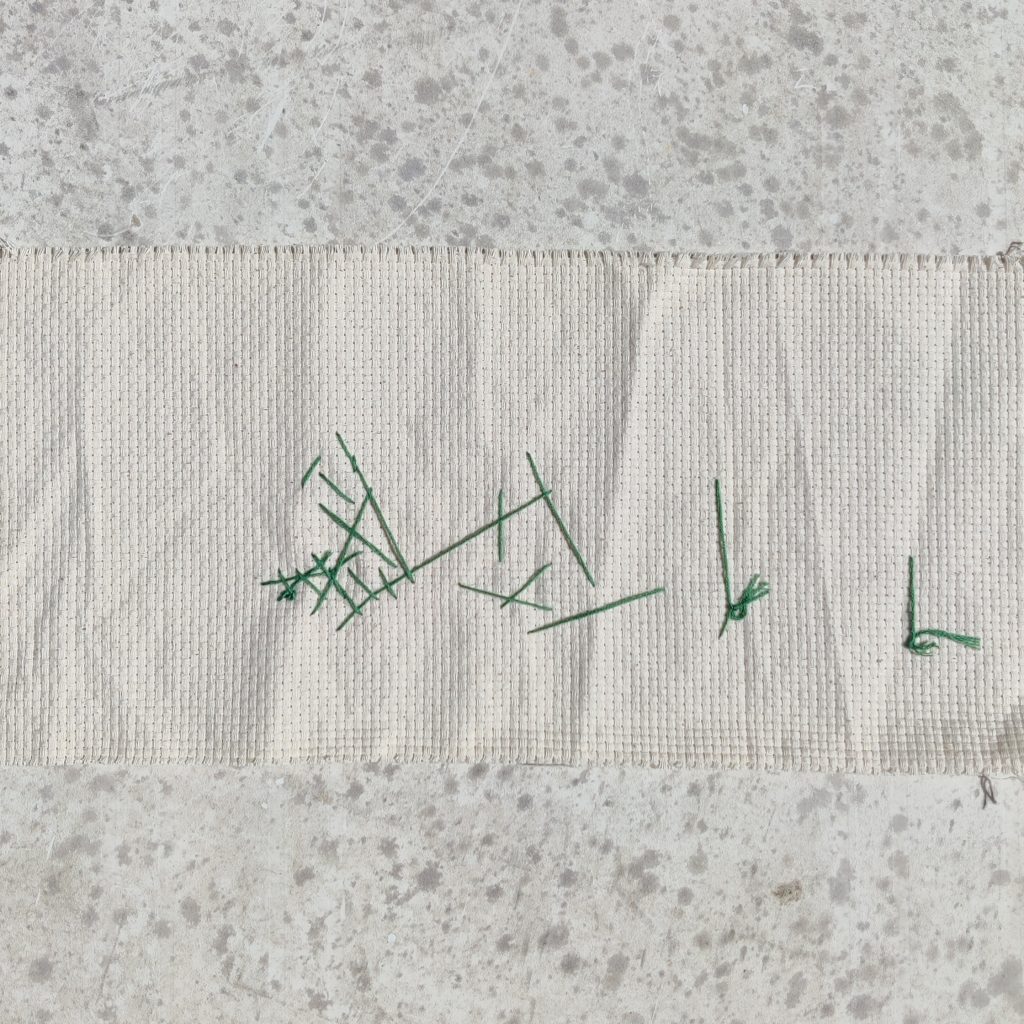
There is a parallel to be drawn here with Joseph Kosuth’s ‘One and Three Chairs’:
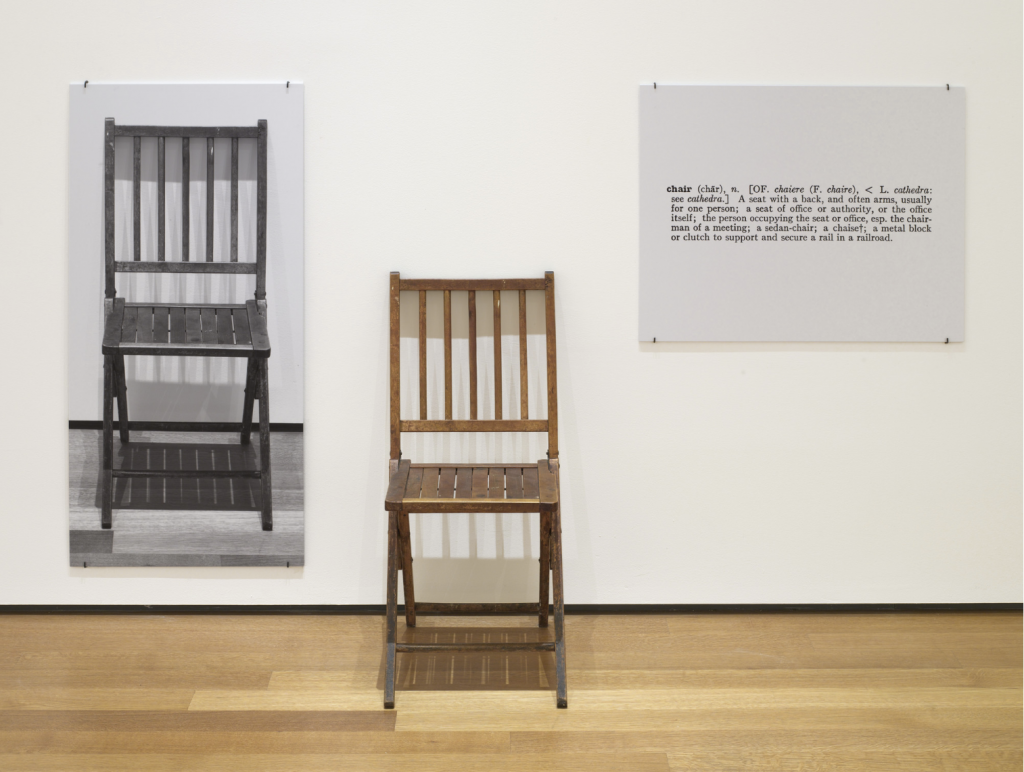
FFFFFFFF[+FFFF[+FF[+F[+X][-X]FX][-F[+X][-X]FX]FFF[+X][-X]FX][-FF[+F[+X][-X]FX][-F[+X][-X]FX]FFF[+X][-X]FX]FFFFFF[+F[+X][-X]FX][-F[+X][-X]FX]FFF[+X][-X]FX][-FFFF[+FF[+F[+X][-X]FX][-F[+X][-X]FX]FFF[+X][-X]FX][-FF[+F[+X][-X]FX][-F[+X][-X]FX]FFF[+X][-X]FX]FFFFFF[+F[+X][-X]FX][-F[+X][-X]FX]FFF[+X][-X]FX]FFFFFFFFFFFF[+FF[+F[+X][-X]FX][-F[+X][-X]FX]FFF[+X][-X]FX][-FF[+F[+X][-X]FX][-F[+X][-X]FX]FFF[+X][-X]FX]FFFFFF[+F[+X][-X]FX][-F[+X][-X]FX]FFF[+X][-X]FX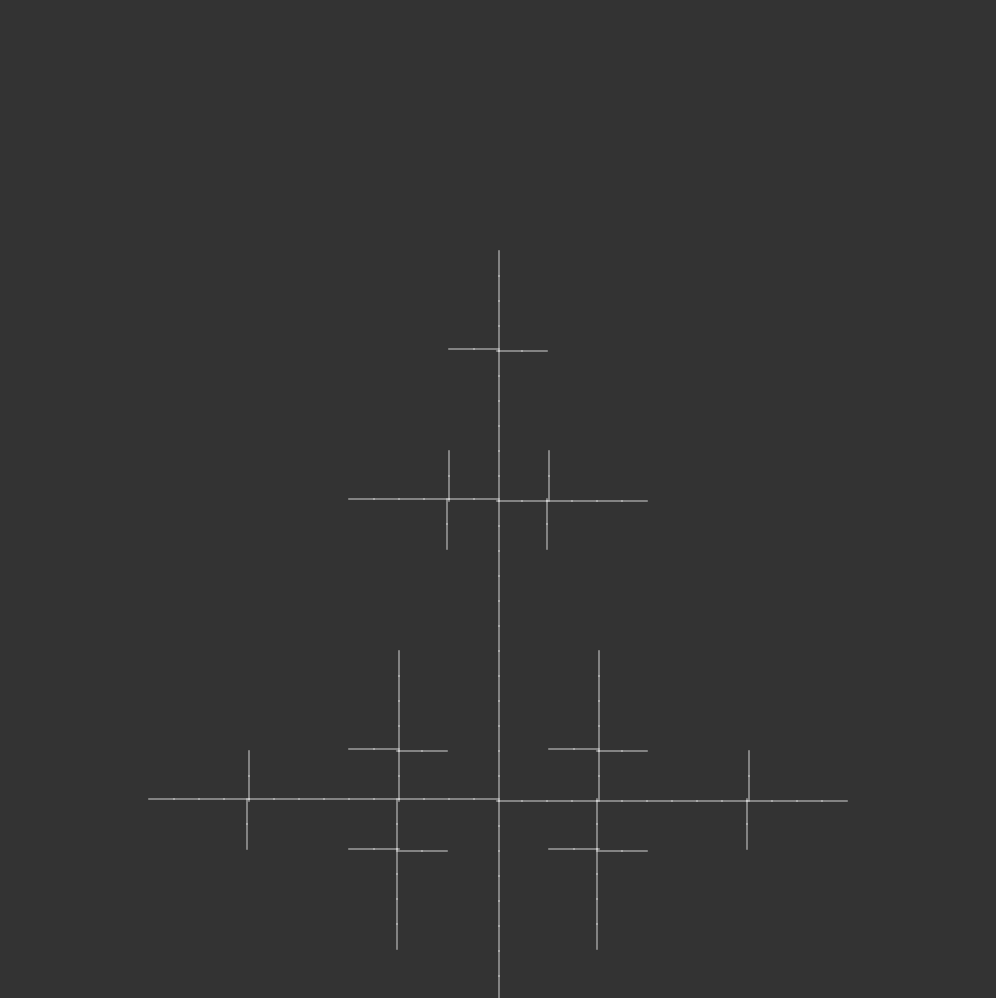
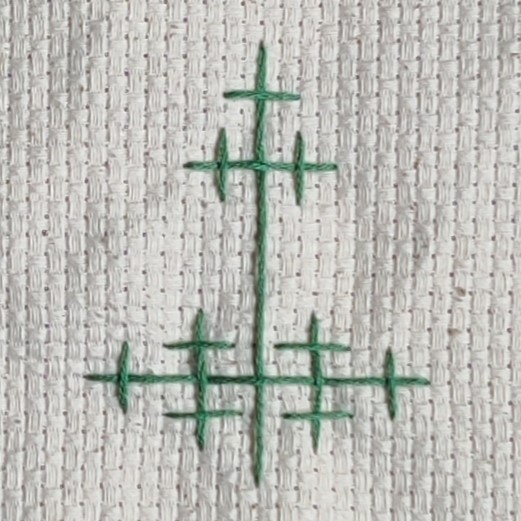







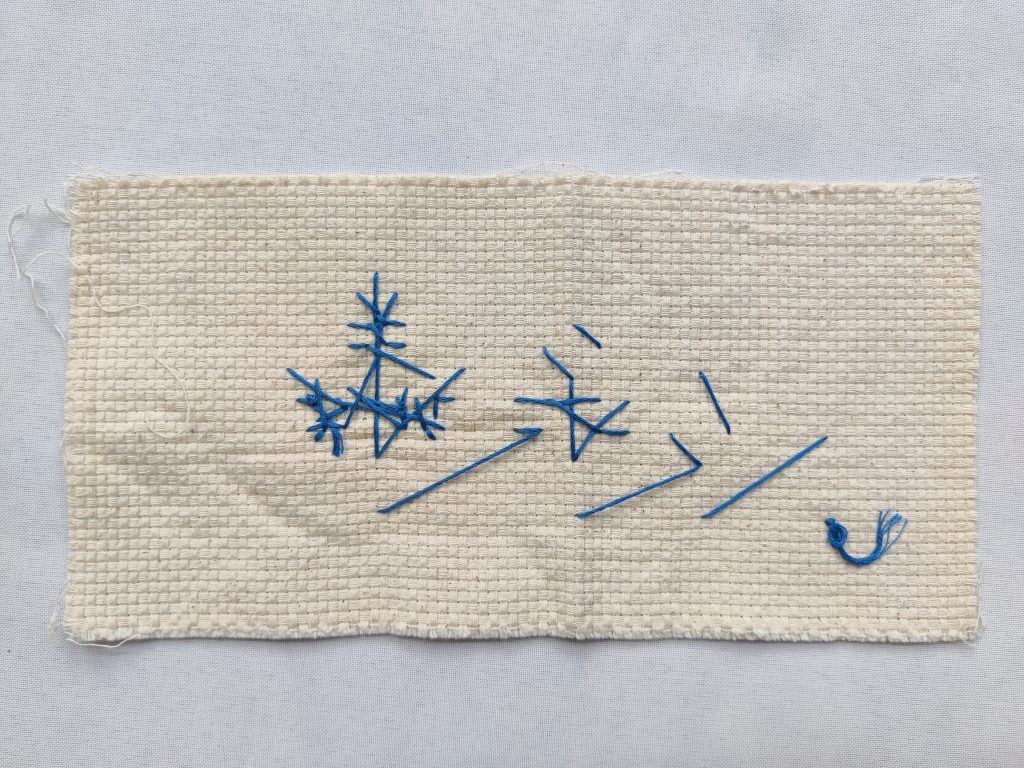
‘Thinking through stitching’ with other L-systems from The Algorithmic Beauty of Plants: what does it mean to have these snippets of an infinite shape?
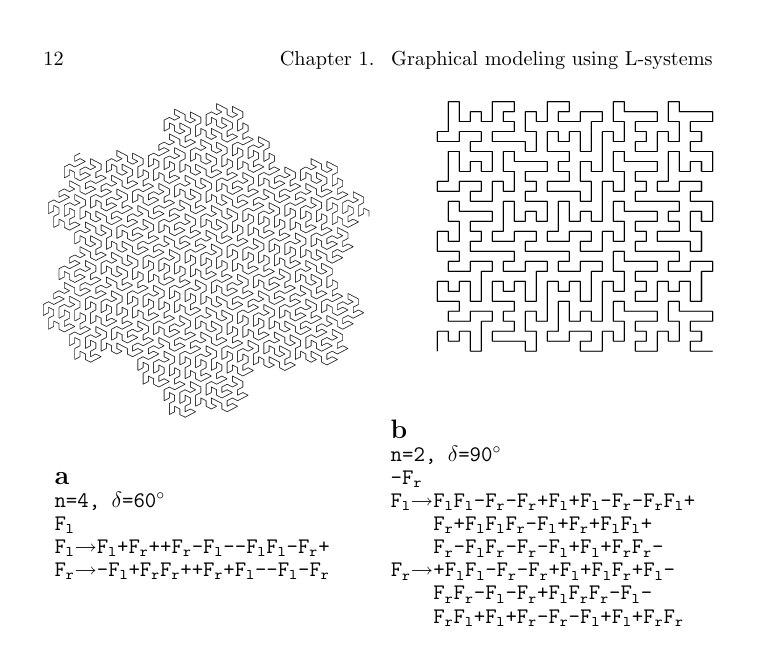

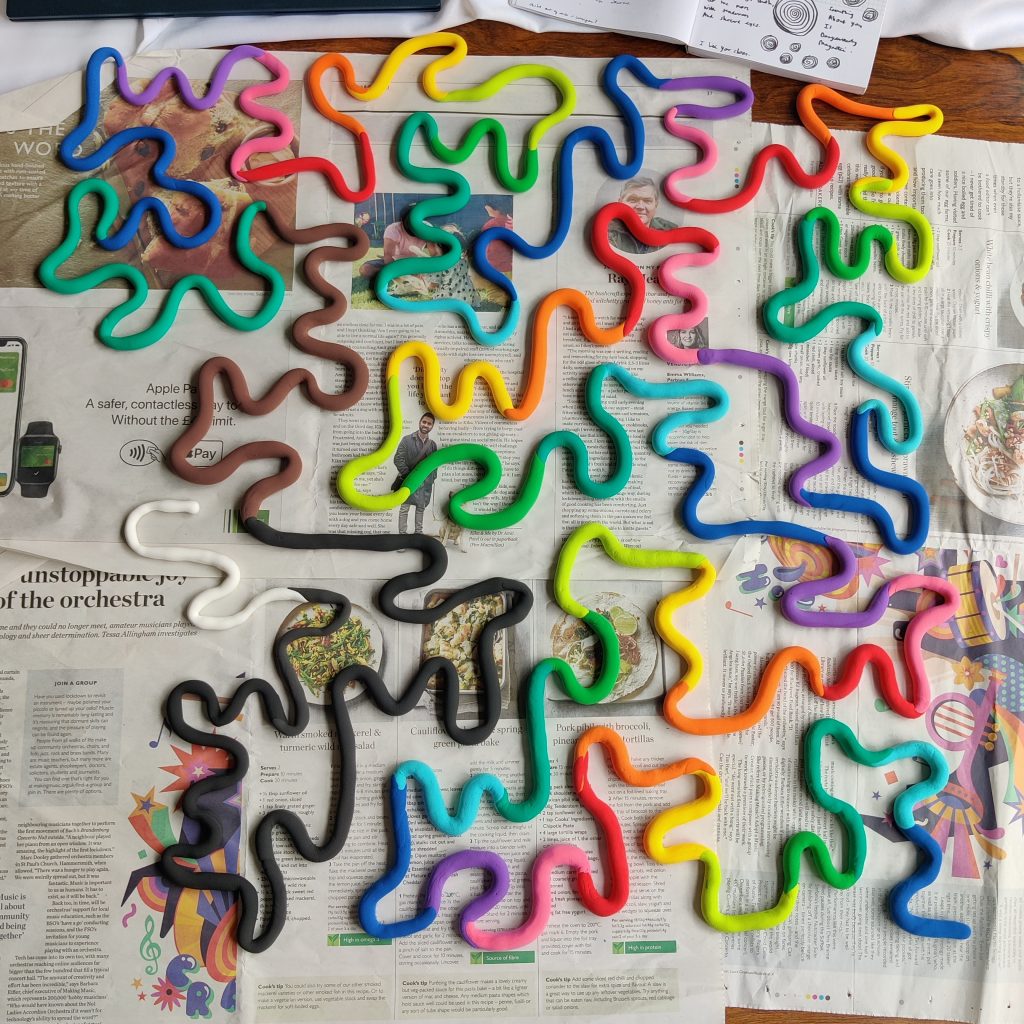

If I were to formulate a tree-cipher out of lines, like Ogham or Aengus Woods’ illustration,
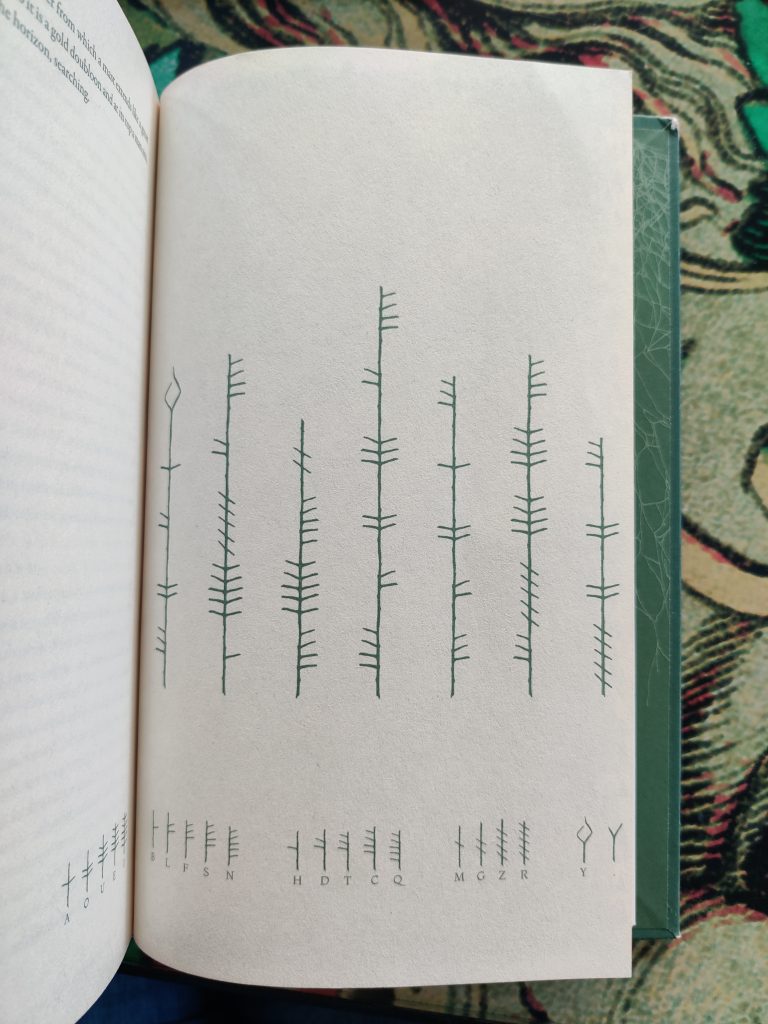
it would have a kind of double-encoding: encoded in an L-system, and enciphered in an encryption of my devising. There is a parallel to this and the scientific pursuit in general: the finding-out of hidden information and mechanisms.
If I take my Lindenmayer system iterations all at the same iteration (say, after 3 re-writings), as in:
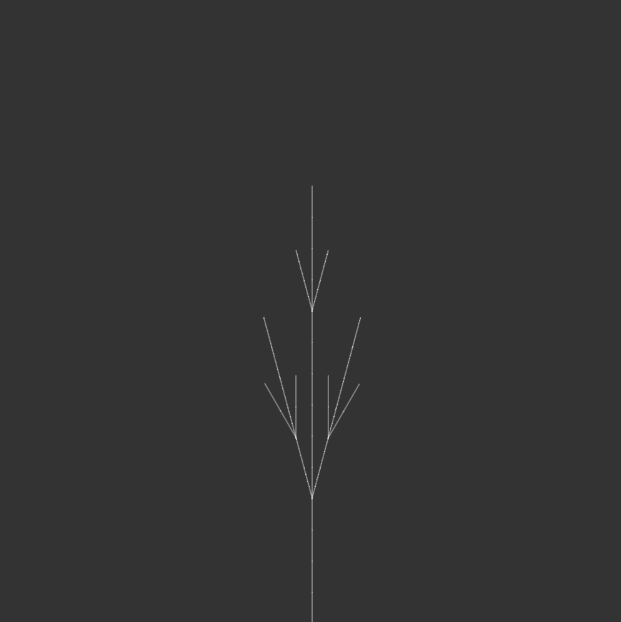

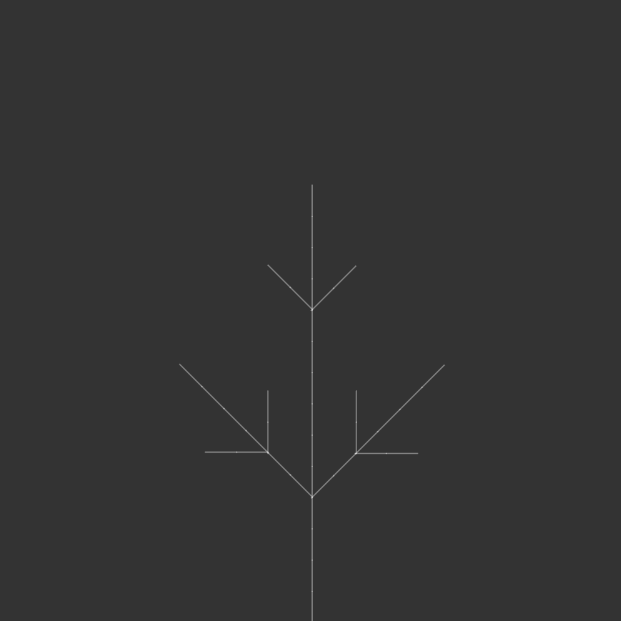
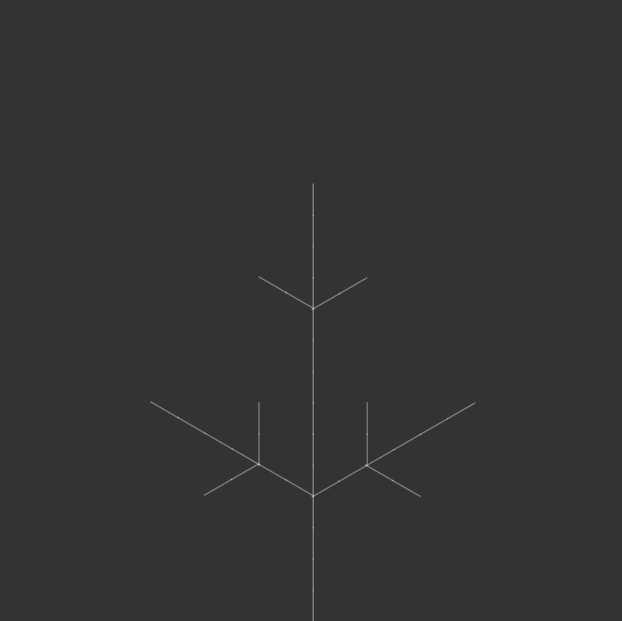

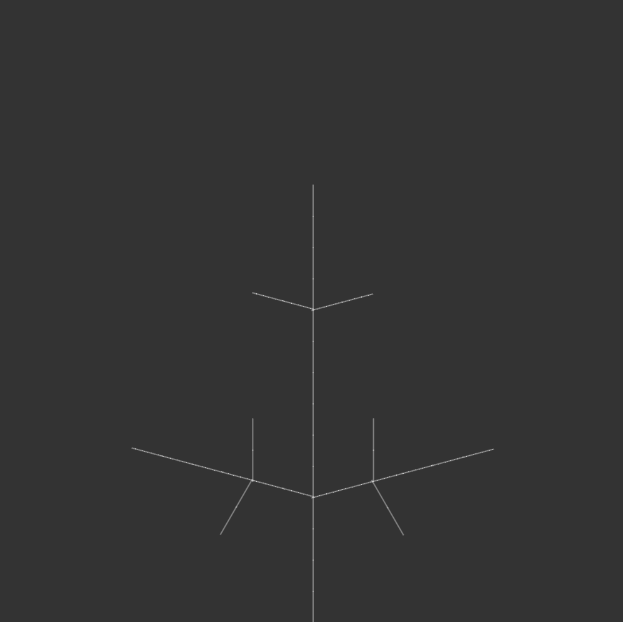

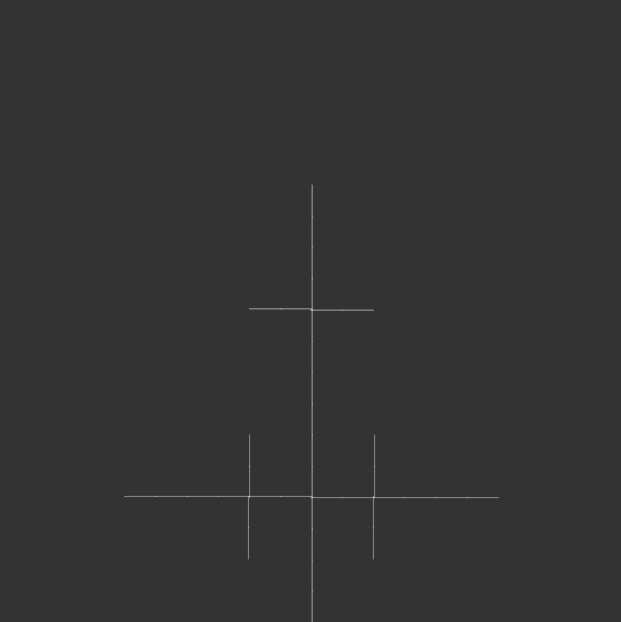
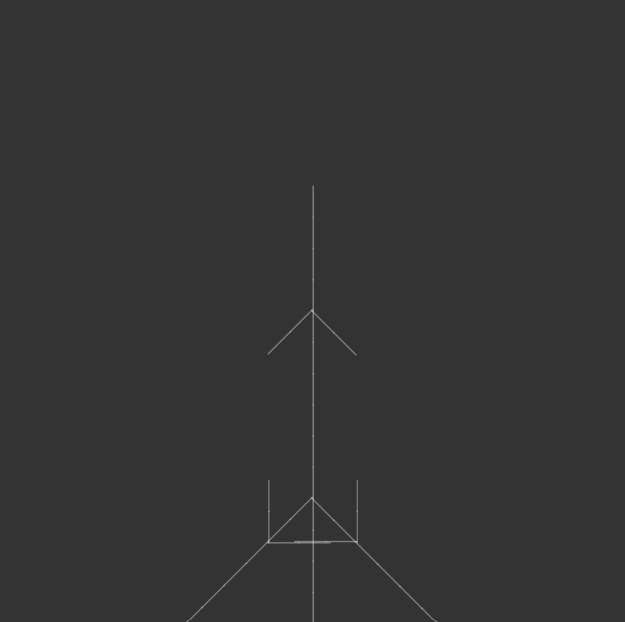
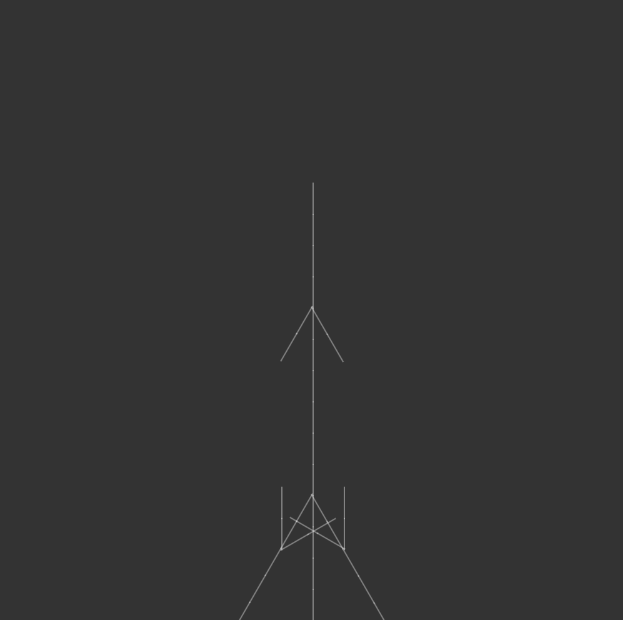
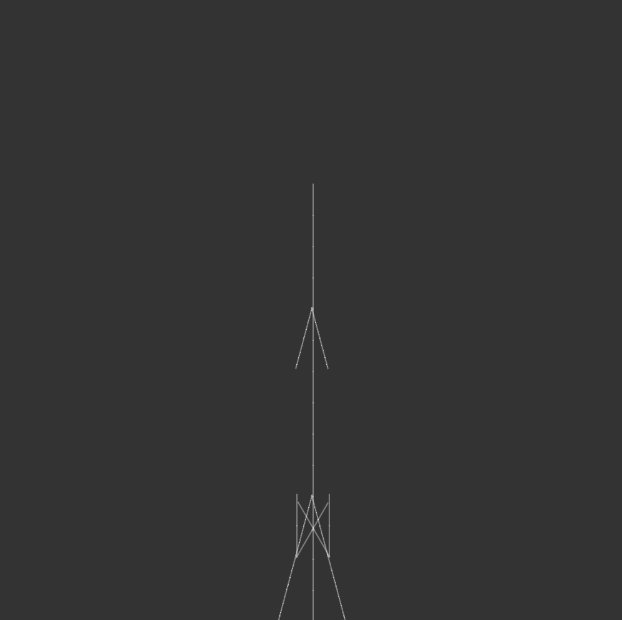
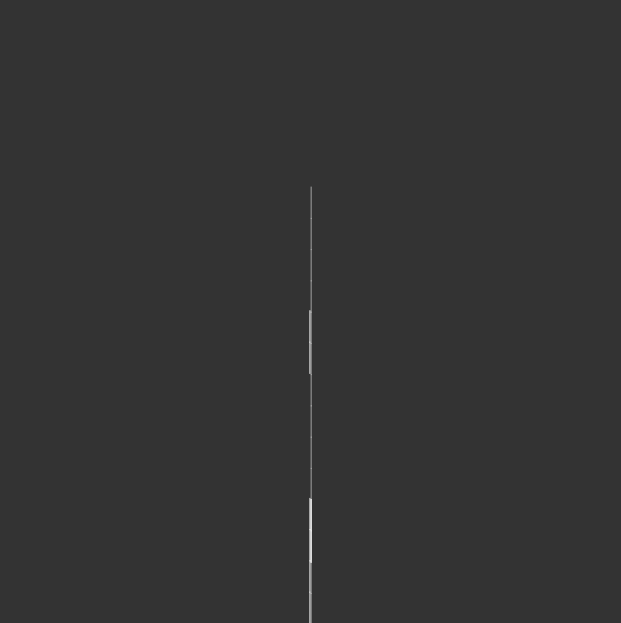
There are 12 possible permutations, which could be linked through their stems. (Ignoring 180°) if these were split like in Aengus Woods’ illustration, I could create 33 letters. As English only has 26, I will consider the first 9 iterations to generate 27 letters, e.g.
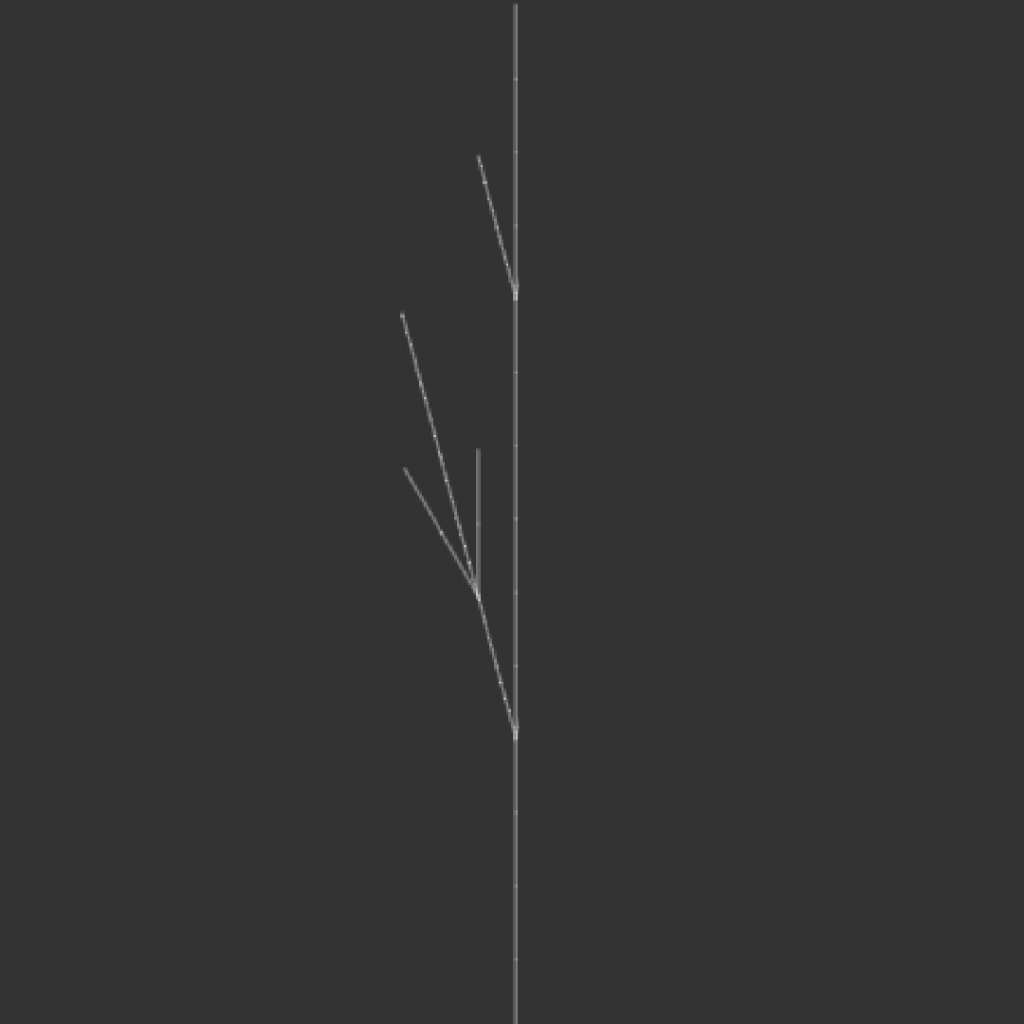
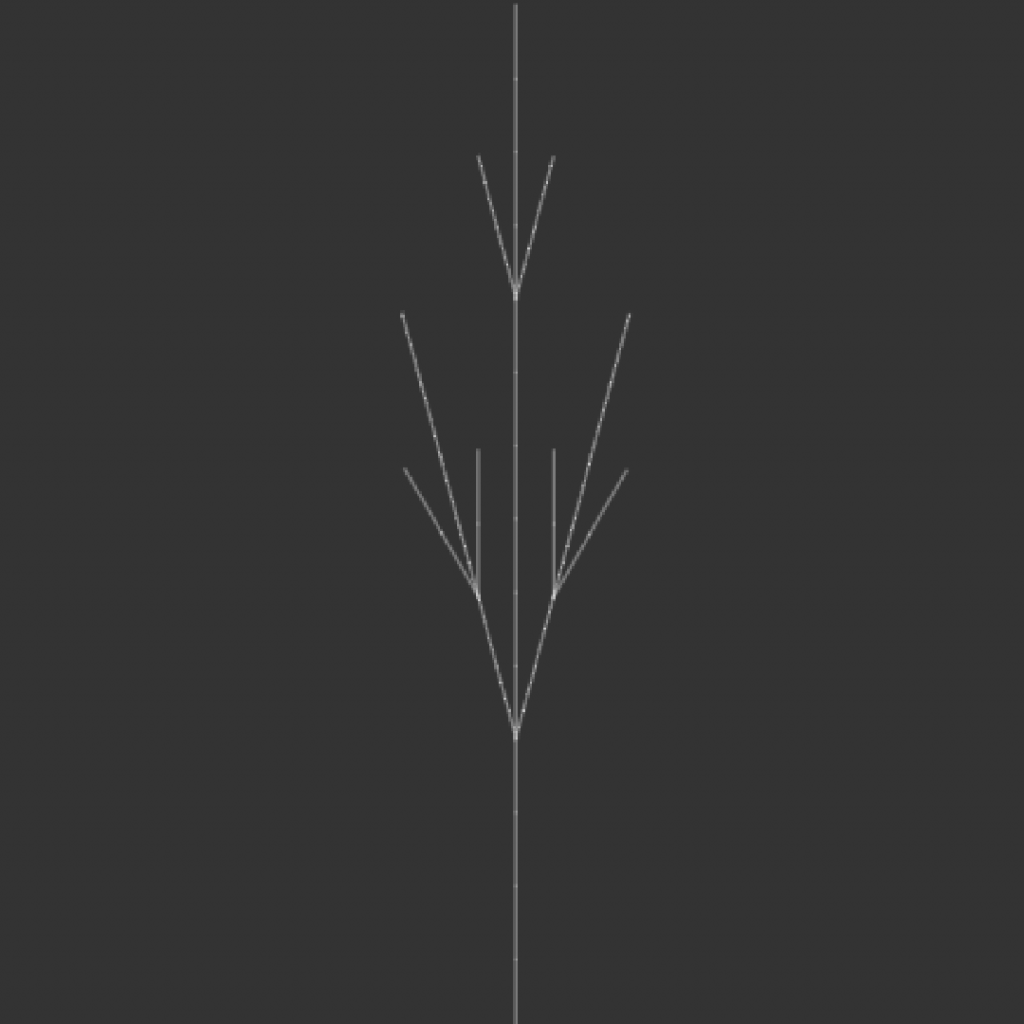
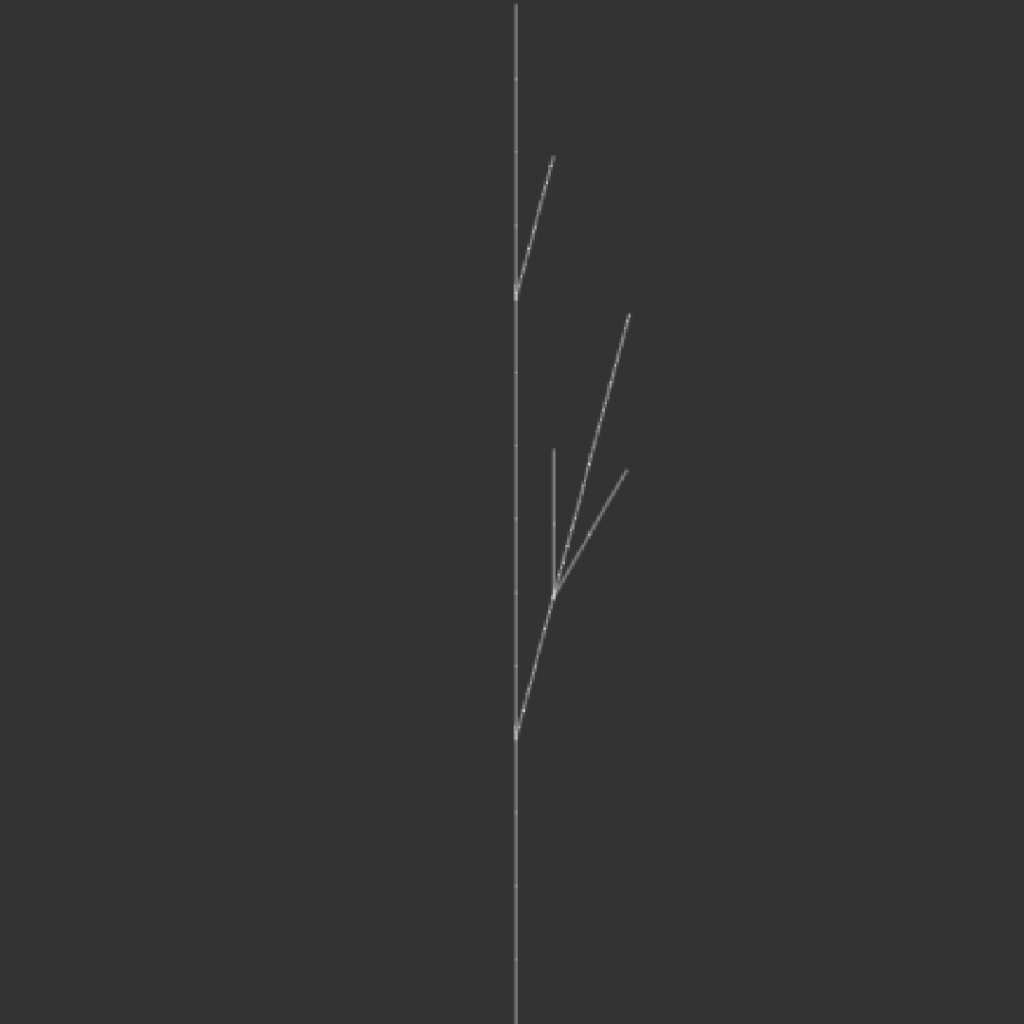

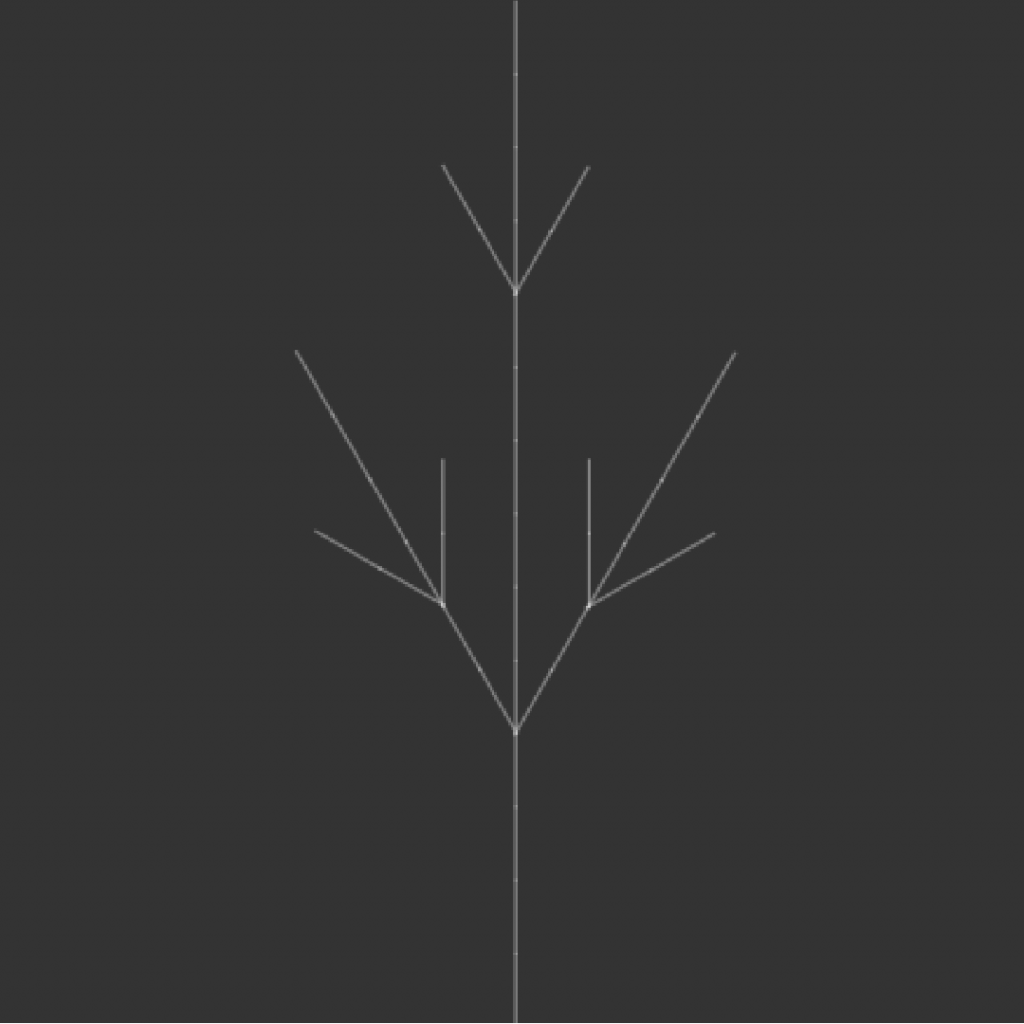
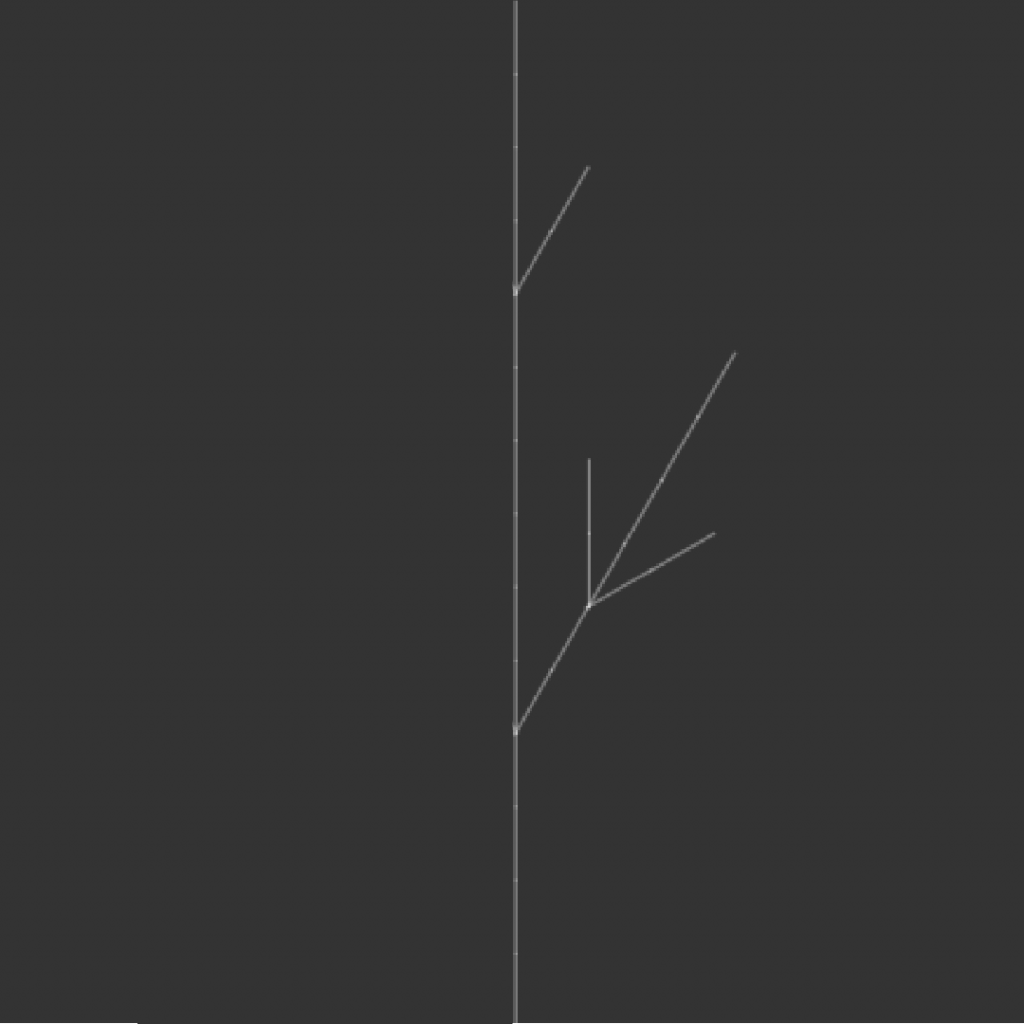
These could then be put together to form a tree-cipher, e.g.
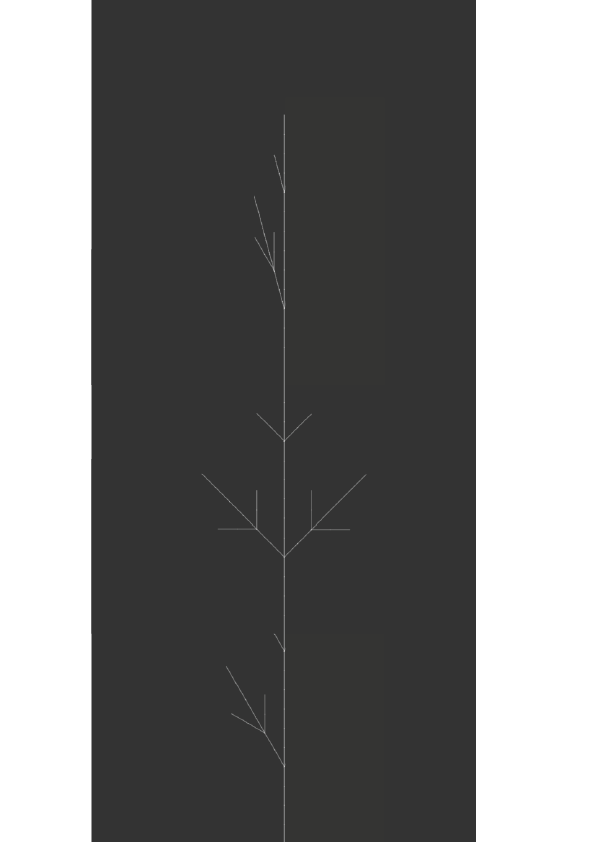
There are secrets to the way trees operate, but we can also use them to embed our own secrets.